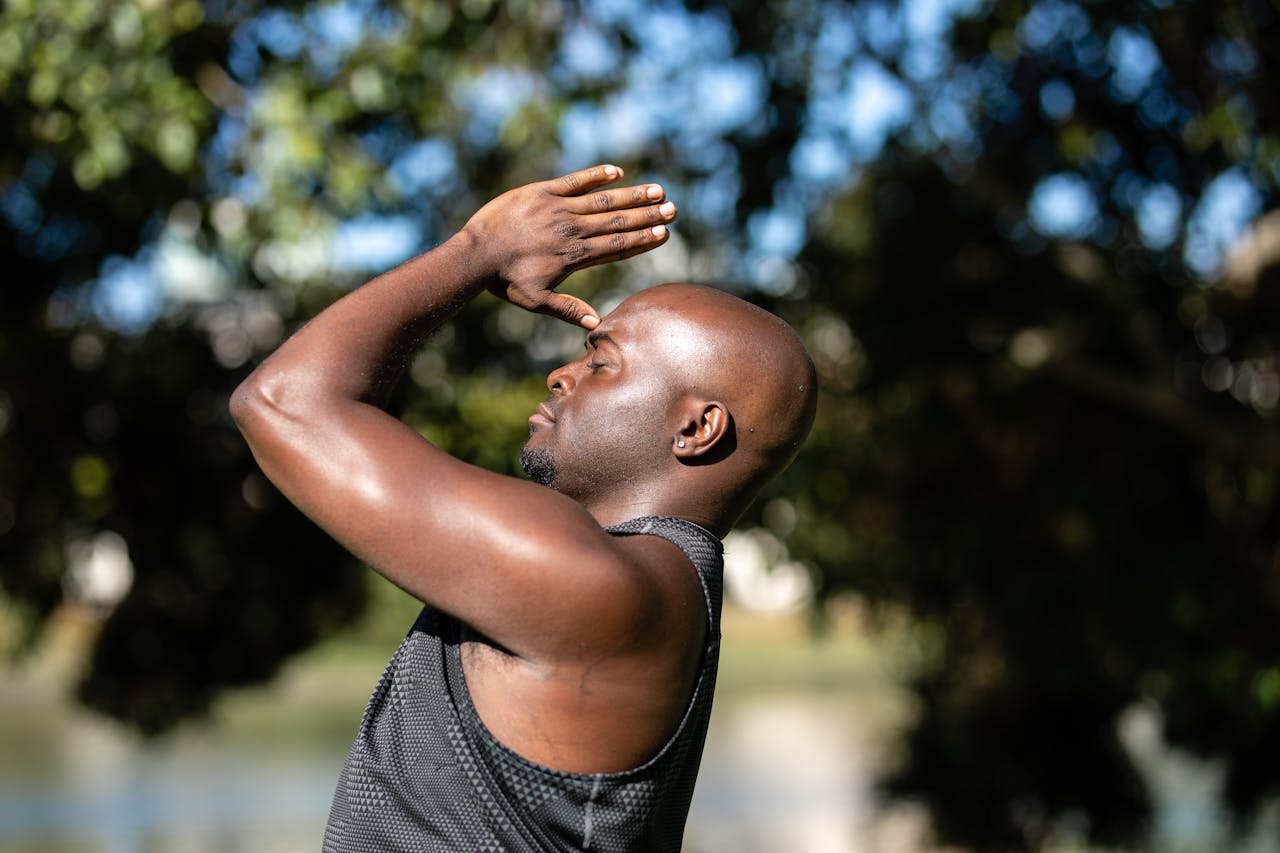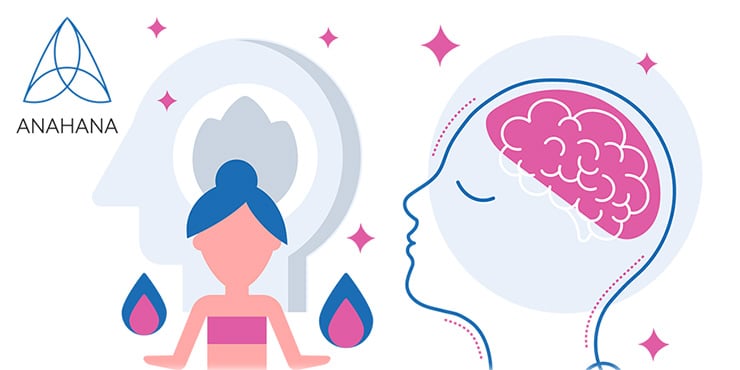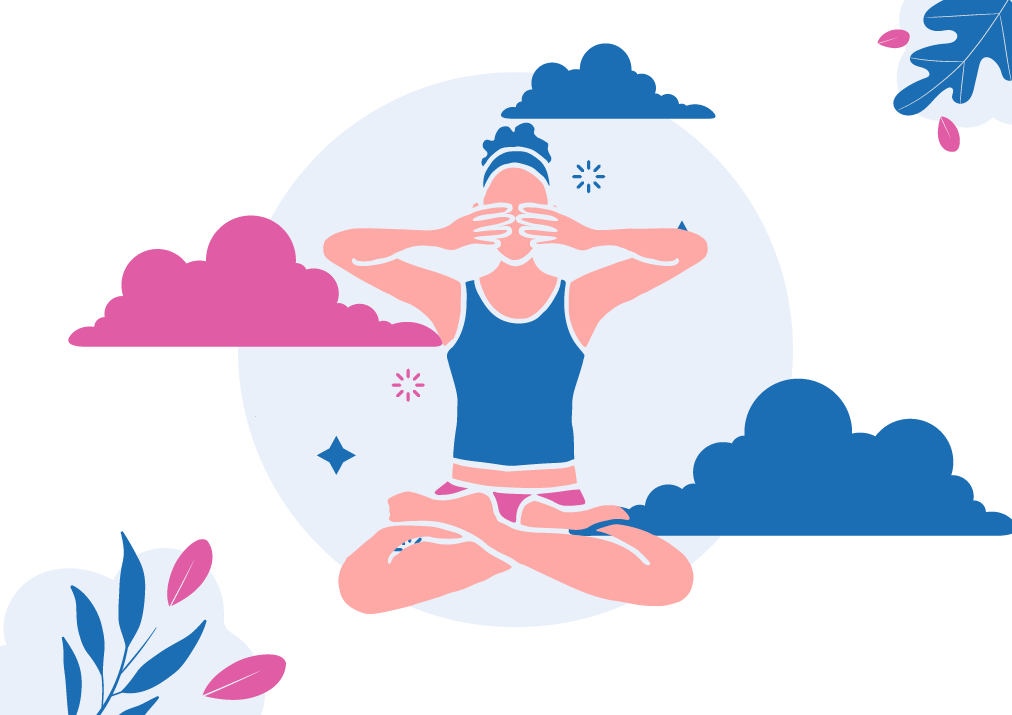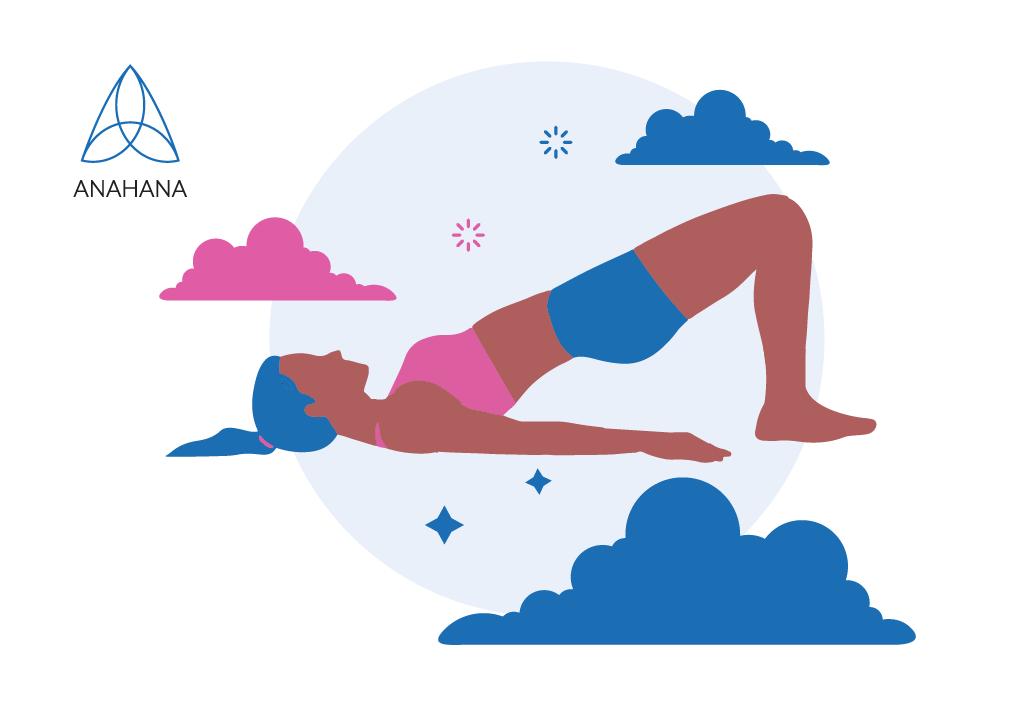
Table of Contents
Almost everyone experiences the occasional headache. When most people feel one coming on, their first reaction is to grab a pain reliever, like aspirin or ibuprofen. But what if we tell you that there is a healthier and more effective way to cope with head pain?
Who Gets Headaches?
Headache disorders are a global issue. They are among the most common conditions in the nervous system. However, they are often underrecognized, underestimated, and undertreated. 50% of the global adult population has this problem, and up to three-quarters of adults between 18 and 65 have had headaches in the past year. They affect individuals of all geographic areas, ages, races, and socioeconomic statuses. Although everyone can experience headaches, women are twice as likely to suffer for an extended period of time due to their fluctuating estrogen levels.
Different Types Of Headaches
 There are three main types of headaches experienced frequently by the global population. These include tension, migraine, and cluster headaches. Continue reading to learn about the three most common variations.
There are three main types of headaches experienced frequently by the global population. These include tension, migraine, and cluster headaches. Continue reading to learn about the three most common variations.
Tension Headaches
This is the most usual type, which produces a dull squeezing sensation on both sides of the head. It may also cause achy pains in the shoulders and neck. The length of tension headaches varies and can last anywhere from 30 minutes to a week. People often treat these headaches with over-the-counter pain medications like aspirin and ibuprofen. Causes of tension headaches include stress, depression, head injury, anxiety, tiredness, hunger, etc. They occur in older teens and adults and are seen more in women than in men.
Migraines
These are a more severe type of headache and can cause excruciating pain. The pain is usually focused on one area of the head. Migraine attacks begin around the eyes and temples and spread to the back of the head. Episodes can last up to 72 hours.
According to Dr. Elizabeth Loder, chief of the Division of Headache in the Department of Neurology at Harvard-affiliated Brigham and Women’s Hospital, one good way to characterize the symptoms of a migraine attack is the acronym POUND: pulsating pain, one-day duration of extreme untreated attacks, unilateral (one-sided) pain, nausea and vomiting, and disabling intensity. Loud noises, bright lights, and strong smells can also worsen the symptoms of a migraine.
People sometimes have warning signs before an episode, such as visual disturbances and numbness or tingling on one side of the body. 90% of people who get migraines have a family history. This demonstrates how it can often run in families. People between 18 and 44 most frequently experience migraines.
Cluster Headaches
These occur in clusters on one side of the head. They usually entail one to eight brief but intense head pains a day over one to three months. They are abrupt and typically last between 30 minutes and an hour. People with this disorder will have repeated attacks every few years. Episodes can cause a runny nose and the eye on the side with head pain to droop and become red and watery.
People are more sensitive to light and sound and become quite agitated and restless. Cluster headaches usually occur in people between the ages of 20 and 50. However, they can develop at any age. Smoking and alcohol may contribute to episodes. Furthermore, you have an increased risk if your family members have a history of these attacks. Cluster headaches occur nearly five times more frequently in men than in women.
Besides tension headaches, migraines, and cluster headaches, three other headaches include sinus headaches, cold-stimulus headaches, and exercise headaches. Continue reading to learn about some of these more short-lived headaches and the variations of symptoms.
Sinus headaches
This type of headache is caused by a sinus infection. It produces pain above the forehead, around the nose and eyes, above the cheeks, and sometimes in the upper teeth. The pain goes away once the infection is resolved.
Cold-stimulus headaches
Some individuals experience sharp headache-like pain when they eat or drink something cold, commonly referred to as a brain freeze. The pain only lasts up to a few minutes. These can be prevented by warming cold food or drinks up in the front area of your mouth before swallowing.
Exercise headaches
Vigorous activity sometimes triggers exercise headaches. These can be avoided by ensuring that you are thoroughly hydrated or potentially taking anti-inflammatory medication before working out.
Yoga Can Help Solve Headache Disorders
Fortunately, yoga is a comprehensive system that can not only prevent but also help resolve these issues. Here’s how:
Yoga is not only a form of physical exercise but also a comprehensive system of healing. According to Peter Wayne, faculty editor of the Harvard Special Health Report, yoga addresses several health systems cohesively rather than targeting and focusing on one specific aspect of health. It is a mind-body exercise that incorporates gentle movements, meditation, and breath control to stretch and strengthen muscles.
These techniques are highly beneficial for relieving chronic pain such as headaches. The deep state of relaxation achieved during yoga class effectively reduces stress, which is one of the most common head pain triggers. In addition, it promotes healthier lifestyle habits, including healthy eating and getting adequate sleep. These changes can reduce the risk of headaches and relieve tension during an episode.
The exercise incorporated in yoga movements is also a natural headache remedy. It reduces discomfort in the head by supporting a healthy heart and blood vessels while decreasing blood pressure and improving mood. Many studies support how mind-body exercises are practical solutions to managing chronic head pain.
Nearly 10% of the population prone to migraines discontinues their use of over-the-counter migraine medication due to adverse side effects. Therefore, incorporating yoga into your daily routine is worth considering as a healthy and effective alternative healing method for managing head pain.
Yoga Exercises And Poses That Relieve Headache Pain

Grab a yoga mat and try practicing these three yoga poses that you can use to prevent or relieve your headache:
Victorious breath (ujjayi pranayama): Victorious breath is also known as ocean breathing, snake breathing, whispering breathing, and snoring breathing. This breathing exercise focuses on your breath and calms the mind. Grab a yoga mat and either sit up straight or lie on your back to perform the exercise. Or, you may also want to find another comfortable surface. Maintain a contraction in your throat, so your breath makes a whispering sound. Keep your mouth closed and inhale through your nose. Control your breathing with your diaphragm, and keep your inhalation and exhalation of equal length.
-
Benefits: Ujjayi pranayama is a great way to manage head pain by calming the parasympathetic nervous system and releasing stress. In addition, it gets more oxygen to the brain. This can decrease your risk of getting a headache and reduce pain if you have existing discomfort.
-
Risks and contraindications: When practicing victorious breath, be careful not to close your throat. If it is your first time doing this breathing exercise, or if you have low blood pressure, you should do so with a certified instructor to guide you. Stop the procedure if you become dizzy or feel faint. If you have any medical concerns, consult with a doctor first.
Downward dog (adho mukha svanasana): Begin on your hands and knees, with your wrists directly under your shoulders and your knees under your hips. Press down into your fingers, stretch your elbows, and release your upper back. With your weight evenly distributed in your hands, slowly push off your knees to straighten your legs. Continue into the pose by lifting your pelvis and extending your spine. Hold this position for up to two minutes. When exiting the pose, relax the knees and return to hands and knees.
-
Benefits: This yoga pose helps with circulation and increases blood flow to the brain. It can relieve headaches and help you feel more energized. In addition, the downward-facing dog pose calms the mind and relieves stress, alleviating head pain and decreasing your risk of getting a headache.
-
Risks and contraindications: This pose is not recommended for people suffering from high blood pressure, detached retina, weak eye capillaries, or any other infection that affects the eyes and ears. In addition, if you have recently injured your ankles, legs, hips, shoulders, back, or arms, it is suggested that you wait until you have recovered before performing this posture.
-
Modifications: People with sensitive wrists or Carpal Tunnel Syndrome may need to modify this pose. One option is to use a rolled-up towel under the palms of your hands. You may also try dolphin pose, which is done by placing the forearms on the ground to avoid pressure in the wrists.
Child’s pose (balasana): This is a restorative yoga pose that allows you to relax and stretch fully. To begin, kneel on the ground and touch your big toes together. Sit back on your heels and open your knees so that they are hip-width apart. Slowly do a forward fold and bring your head straight down and rest it on the floor in front of you. Lengthen and extend your upper body and arms forward in front of you with your palms facing down. Take several deep, slow breaths. To release out of the pose, use your hands to push yourself back onto your heels.
-
Benefits: This pose calms the nervous system to reduce pain. In addition, it relieves stress and tension in the upper body, helping reduce and prevent headaches.
-
Risks and contraindications: Balasana should not be performed if you are pregnant. In addition, do not attempt this posture if you have a knee injury or are experiencing diarrhea, as it can worsen the conditions.
Head to knee pose (Janu Sirsasana): Begin in a seated position with your legs straight in front of you. Bend your left leg and bring your left foot into your right thigh. Turn to face your extended right leg and walk your hands out towards your foot. Keep your right foot flexed and press the right thigh down into the ground. When you reach your maximum forward bend, you may choose to either maintain a lengthened spine and neck or relax down into the stretch. Depending on how far you can reach, grab hold of your foot, ankle, or calf. Extend the spine on each inhalation, and relax deeper into the stretch on each exhalation. Hold this for up to ten breaths, and repeat the exercise on the other side.
-
Benefits: The head to knee pose effectively calms the brain to relieve head pain. In addition, it reduces stress, anxiety, and depression, which can contribute to headaches.
-
Risks and contraindications: This pose should not be performed if you have asthma or diarrhea. In addition, if you have a knee injury, it is essential that you do not flex the knee completely. Instead, consider using a folded blanket to support your knee to prevent worsening your injury.
Other poses that can be used to release tension include:
-
Legs-up-the-wall pose
-
Corpse pose
-
Bridge pose

Frequently Asked Questions
Can yoga be used to manage migraines?
Ninety percent of people who get migraines have a family history. Of this 90%, nearly everyone faces recurring episodes. If you are prone to headaches, you must learn to manage them effectively.
Although many people choose to use medication, it can be expensive and is often ineffective. In addition, it can even have unwanted side effects. Studies have shown that the intensity and frequency of headaches are reduced more in yoga therapy than through conventional care. This demonstrates how migraine patients can practice yoga to manage pain and decrease the frequency of episodes.
How does yoga help migraines and headaches?
Yoga is a highly effective activity for pain relief. Half of the people in the U.S. that suffer from chronic headache pain use mind-body techniques like yoga to alleviate pain. Other methods include meditation, deep breathing, and stress management, which are also taught through yoga.
Mind-body therapy helps lower stress, one of the most frequent headache triggers. In addition, yoga promotes a healthy lifestyle, including a nutritional diet, regular exercise, and enough sleep, limiting episodes. Practicing yoga keeps the heart and blood vessels healthy while boosting mood, relieving stress, and preventing high blood pressure - three common causes of migraines and headaches.
Why does yoga cause headaches?
Yoga should not give you a headache. If you experience head pain while practicing yoga, it is likely caused by habitat or environmental hazard. Here are some factors that can contribute to headaches you should consider:
-
Dehydration: This is one of the most common causes of headaches and occurs when you do not drink enough water. Certain types of yoga involve vigorous exercise, which results in your body sweating. This increases your risk of dehydration. Increasing blood supply in the head through drinking water is strong in preventing headaches. Watch for additional symptoms, including fatigue, dizziness, dark yellow urine, and a dry mouth. Drink water before and during the yoga class to prevent dehydration.
-
Hunger: Eating before any exercise is crucial as our bodies need glucose for energy. Suppose you do not consume enough food before yoga class. In that case, your blood glucose levels may drop, resulting in a hunger headache. Other symptoms may involve sweating, nausea, and faintness.
-
Bright lights: Bright lights both indoors and outdoors can lead to a headache. In addition, people who practice yoga outdoors are at risk of a heat headache from the sun glare and sunlight.
-
Inversion poses: Your heart is held higher than your head during inversion poses, putting you in an upside-down position. These poses may trigger headaches.
-
Overexertion: New yoga practitioners participating in an advanced class may overexert themselves. Moving past your body's capabilities can cause a headache, and it is recommended that you start with a beginner's yoga class .
-
Incorrect technique: Yoga requires proper technique, and form varies depending on the pose. Having good form is key to preventing injury. Without this, you risk straining muscles in and near your neck and head, which can cause a headache, tension and discomfort.
-
Improper breathing: People who are new to yoga sometimes hold their breath by accident while focusing on a pose or movement. Improper breathing makes it difficult for oxygen to reach the brain and muscles. This can cause muscle tension and head pain.
References
Benefits of Ujjayi Breathing and How to Do It
Headache remedies to help you feel better - Harvard Health
Tai chi or yoga? 4 important differences - Harvard Health
Non-opioid options for managing chronic pain - Harvard Health
Head-to-Knee Forward Bend (Janu Sirsasana)
Cluster headache - Symptoms and causes - Mayo Clinic
Headache From Yoga : Causes, Treatment, Prevention, More
Yoga for Migraines: Does It Work?
Attention Migraine Sufferers: New Study Finds Yoga an Effective Form of Treatment
Headaches: What to know, when to worry - Harvard Health
Tension headache: MedlinePlus Medical Encyclopedia
Disclaimer
The contents of this article are provided for informational purposes only and are not intended to substitute for professional medical advice, diagnosis, or treatment. It is always recommended to consult with a qualified healthcare provider before making any health-related changes or if you have any questions or concerns about your health. Anahana is not liable for any errors, omissions, or consequences that may occur from using the information provided.

By: Anahana
The Anahana team of researchers, writers, topic experts, and computer scientists come together worldwide to create educational and practical wellbeing articles, courses, and technology. Experienced professionals in mental and physical health, meditation, yoga, pilates, and many other fields collaborate to make complex topics easy to understand.